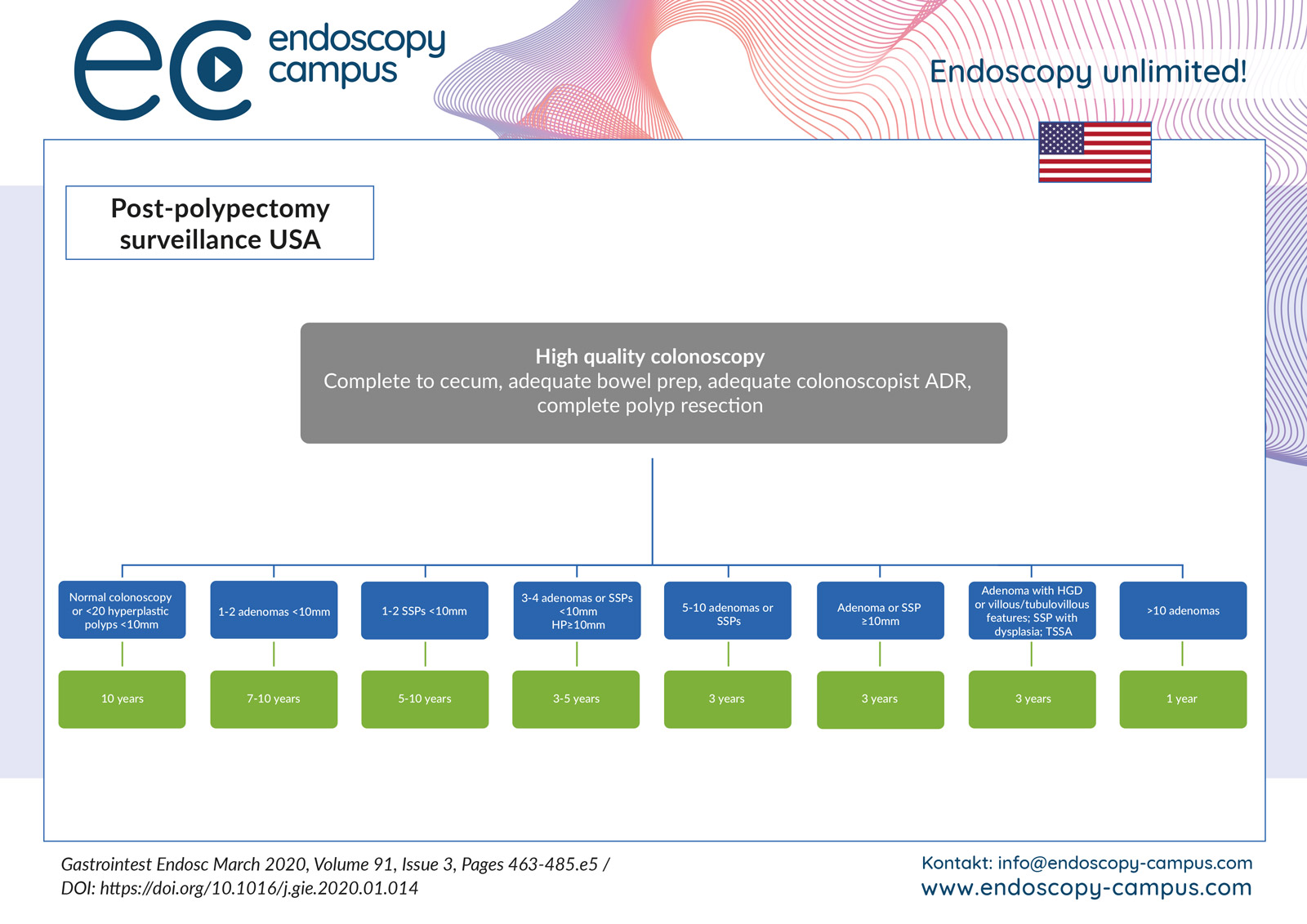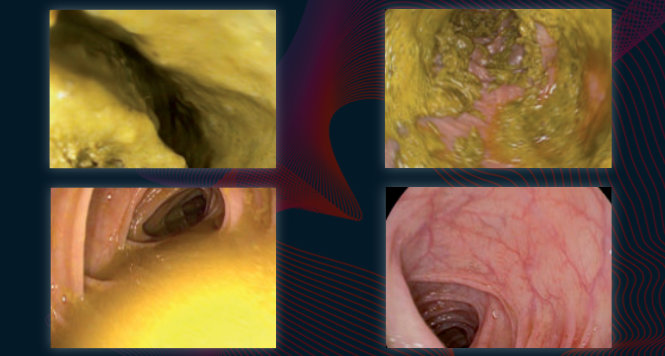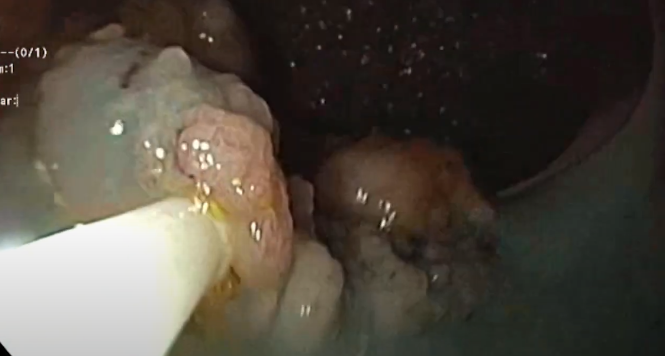Follow-up intervals after polypectomy
Dr. med. Benjamin Walter, Universitätsklinikum Ulm
Follow-up intervals after polypectomy
Colonoscopy is the most reliable procedure for detecting colorectal carcinomas and polyps. The aim of colonoscopy must be to achieve a polyp-free bowel (“clean colon”) — i.e., all relevant polyps should be completely removed. The histological assessment of the resected polyps should include not only the growth type, but also information about the completeness of the resection (R0).
In addition to the “classic adenoma–carcinoma sequence,” there are also other pathways for carcinoma development. On the one hand, there is what is known as the “serrated carcinogenesis pathway,” in which sessile serrated adenoma (SSA) is the entity regarded as a precursor lesion; on the other, there is also a “mixed type” that combines molecular characteristics of the two other carcinogenesis routes, with precursor lesions that may be either the traditional serrated adenoma (TSA) or villous adenomas.
“Interval carcinomas” are a problem. These are tumors that appear in the interval between two screening colonoscopies. Interval carcinomas are largely due to overlooked lesions (“missed adenomas”). Other factors may include incomplete polypectomy, lack of follow-up, and rapidly growing so-called “de novo” tumors.
The intervals set for follow-up examinations after a polypectomy depend on the patient’s individual risk. The risk is thus decisively dependent on the number, size, and histology of the adenomas that are removed. Sessile serrated lesions (SSL) are thereby treated like adenomas.
Regarding the German guideline, the follow-up recommendations apply after the index colonoscopy, both in the area of prevention (first-time for men from the age of 60, for women from the age of 55) and in the area of diagnostic colonoscopy regardless of age. Individual intervals can be considered for significantly younger patients (e.g. under 40 years of age). The guideline does not include a statement for patients at increased familial risk.
A restrictive remark must be made concerning the last two points of the German guideline graphic (complete resection is not reliably achieved): In everyday life, pathology reports often do not comment on this, or a safe R0 resection cannot be guaranteed. The consequence of a strict adherence to the guideline by pathology and endoscopy would therefore lead to a massive increase in the number of follow-up colonoscopies.
Below you can download an overview of the recommended follow-up intervals after polypectomy based on the current German guideline. The recommendations of our colleagues from the UK and the US differ clearly regarding the intervals.
Z Gastroenterol 2013; 51(8): 753-854 DOI: 10.1055/s-0033-1350264
Updated version: S3-Leitlinie Kolorektales Karzinom Langversion 2.1.–Januar 2019. AWMF-Registernummer: 021/007OL




